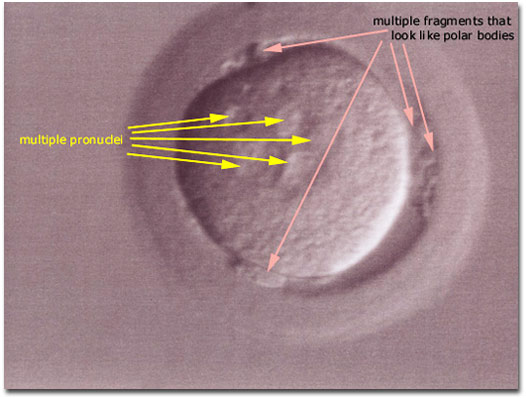|
Fertilized Human Egg with Multiple Pronuclei

A fertilized human egg with multiple pronuclei and fragments outside the plasma membrane (look like multiple polar bodies). These abnormal embryos occurred following intracytoplasmic sperm injection (ICSI), where only one sperm is injected directly into the egg’s cytoplasm. Therefore, polyspermic fertilization was not possible. The percentage of 3 pronuclear zygotes (fertilized eggs) after ICSI is generally less than 10%.
The cause of multipronuclear fertilized eggs following ICSI is often unclear. It is thought that most of these abnormalities occur due to failure to extrude the second polar body. These mistakes in chromosome segregation during the second meiotic division may be caused by the (traumatic) ICSI procedure or may reflect an inherently abnormal egg.
The mechanism resulting in the presence of more than 3 pronuclei or more than 2 polar bodies is also not clear, but may be due to duplication or fragmentation. It is also (theoretically) possible that the egg that was fertilized was digynic (contained a pair of each of the 23 chromosomes rather than one of each of these 23 chromosomes) or binuclear (had two rather than one nucleus) at the time of ICSI, which would then result in three pronuclei after fertilization.
|

|